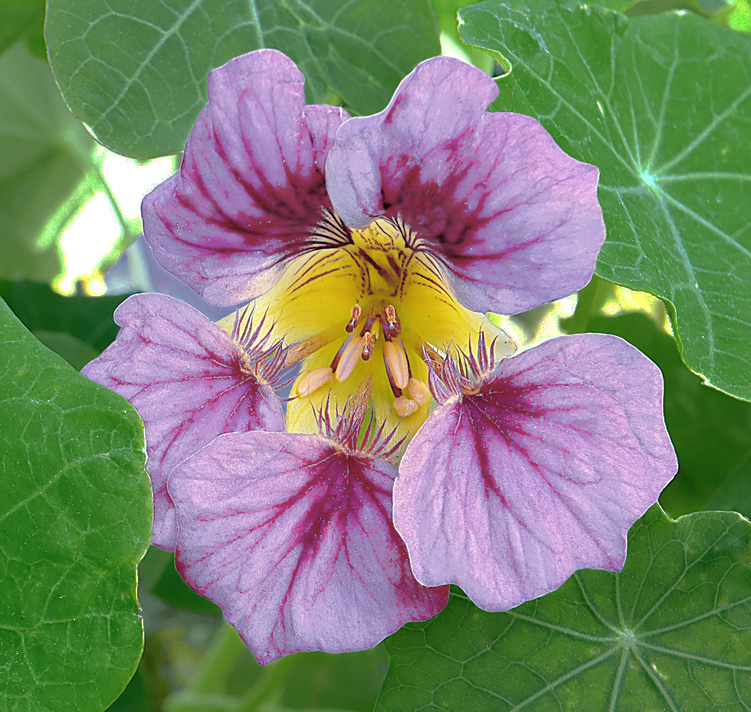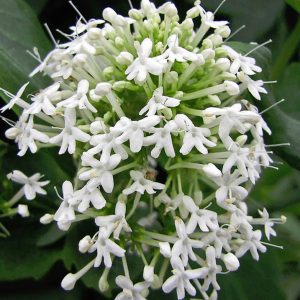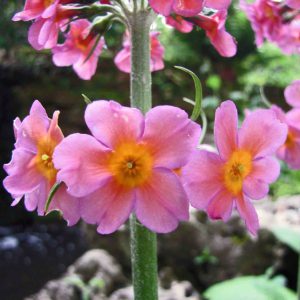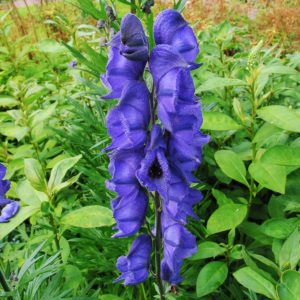Tropaeolum majus ‘Purple Emperor’
PURPLE EMPEROR NASTURTIUM
Tropaeolum majus ‘Purple Emperor’ is a symphony of flower colours, all on one plant.
Velvety blooms open burgundy & mature to purple then lavender
So the blooms open rich burgundy-red, then as each flower matures – it transitions through royal purple, on through soft rose, to finally gentle lavender.
So all the colours are on the plant all at once, as a procession of flowers open right through the summer and autumn.
Mounding & trailing Nasturtium
Beautiful ‘Purple Emperor’ is a mounding and semi-trailing-climbing Nasturtium.
Though it does not produce enormously long stems like a full scale trailer.
So it is perfect for dangling over the side of a pot, cascading from a hanging basket, scrambling up a trellis or frame, or trailing across the ground.
Prolific bloomer for months
‘Purple Emperor’ is a prolific bloomer, so gardener / cooks can enjoy those velvety blooms all through spring summer and autumn – in the garden, the vase and in the kitchen.
Deliciously edible
The flowers, leaves, plus the young seed pods, are all deliciously edible.
So you can add a spicy, peppery flavour to salads and cooking with the leaves, as well as vivid colour contrast, and a sweet pepper flavour with the flowers.
Plus the flowers make such a colourful, as well as edible, garnish for any dish.
Try ‘Purple Emperor’ petals with strawberries – yum for the taste buds and the eyes.
Or shred the leaves into risotto and pesto like basil, and stuff the leaves for dolmades. Yum.
Easy & cheap Capers
Seed pods 0f Nasturtiums are sometimes knick-named “False Capers”, and you can certainly use them as you would Capers, or use the flower buds fresh for their soft mustard flavour.
Useful companion plants in the edible garden
Nasturtiums are valuable companion plants to enhance the growth of cabbages, broccoli, beans, pumpkins and kale. So they all thrive in the company of Nasturtiums.
Nasturtiums are also useful “distraction” plants, attracting sucking insects such as aphids and thrips away from your veg and roses.
And ‘Purple Emperor’ is a traditional “barrier plant” to plant around tomatoes and cucumbers to help ward off destructive pests.
Rabbit & deer resistant
Although we find Nasturtiums delicious fodder, rabbits and deer do not appreciate the peppery flavour as we do.
Bees, birds & pollinators all enjoy the nectar for months
‘Purple Emperor’ flowers delight and nourish our native Honeyeater birds, bees and pollinator friends for months on end.
Quick from seed to flower
Tropaeolum majus ‘Purple Emperor’ is an easy plant to grow in the garden, and quick and easy to germinate from seed.
Easy & low maintenance in the garden
This delightful Nasturtium grows in Full Sun to Part Shade.
And it is low maintenance in the garden – water wise, drought resistant and rarely troubled by any pests or diseases.
Do not overfeed – prefers to grow lean and mean (& tastes better too)
Nasturtiums are natural, low maintenance plants.
Because they grow better, look and taste better, if the are treated a little lean and mean.
So they do not require rich soil, or too much fertilizer or water.
SEED SOWING ADVICE: QUICK & EASY
Suitable for beginners, kids & veggie plots
Seed can be sown at any time – directly into the garden as you would sow peas / or in punnets indoors for quick and early results.
Tip for starting Nasturtium seeds quickly: First soak the seeds overnight in a glass of previously boiled, warm (not boiling) water, then sow.
Seeds that have sunk to the bottom by morning have taken water on board and are ready to sow.
While seeds that are still floating will need to be dried and then gently rubbed between 2 pieces of fine sandpaper or with some sand in your hands. This will nick the hard seed coating and allow moisture to penetrate.
Sow indoors for quick & early plants: Begin by sowing seeds into a punnet filled with good quality compost.
Then cover the seed with mix to the same depth as the diameter of the seed.
Now moisten the punnet thoroughly from below, by standing it in a shallow water bath and allowing the moisture to percolate up to the surface of the mix from below.
Nasturtiums love warmth to sprout
Then place the punnet in a well-lit, warm place such as a window sill (not in direct sunlight), or on a heat mat if you have one.
Nasturtium seeds love warmth to germinate rapidly.
So temperatures of 15-20 degrees C. are optimum for rapid germination.
Then seedlings will begin to emerge in 10-12 days.
However in the unusual event that your seeds are shy to germinate – wrap the the seed punnet in glad-wrap or a plastic bag.
And place in the fridge (not the freezer) for 4-6 weeks.
This will mimic a winter chill, breaking the natural seed dormancy, and prepare the seeds for germination.
Then remove punnet from fridge, unwrap, and place again in a warm, well-lit place or on a heat mat.
Seed Count: 10 seeds per pack approx.
(We always aim to exceed the stated seed count, and give a generous serve).
Click here for Nursery Open Days & Open Gardens Information
https://www.gardivalia.com.au/open-gardens
Click here to go back to Seeds Shop
https://www.seedscape.net.au/shop/
Related products
-
Add to WishlistAlready In WishlistAdd to Wishlist
-
Add to WishlistAlready In WishlistAdd to Wishlist
-
Add to WishlistAlready In WishlistAdd to Wishlist
-
Add to WishlistAlready In WishlistAdd to Wishlist





